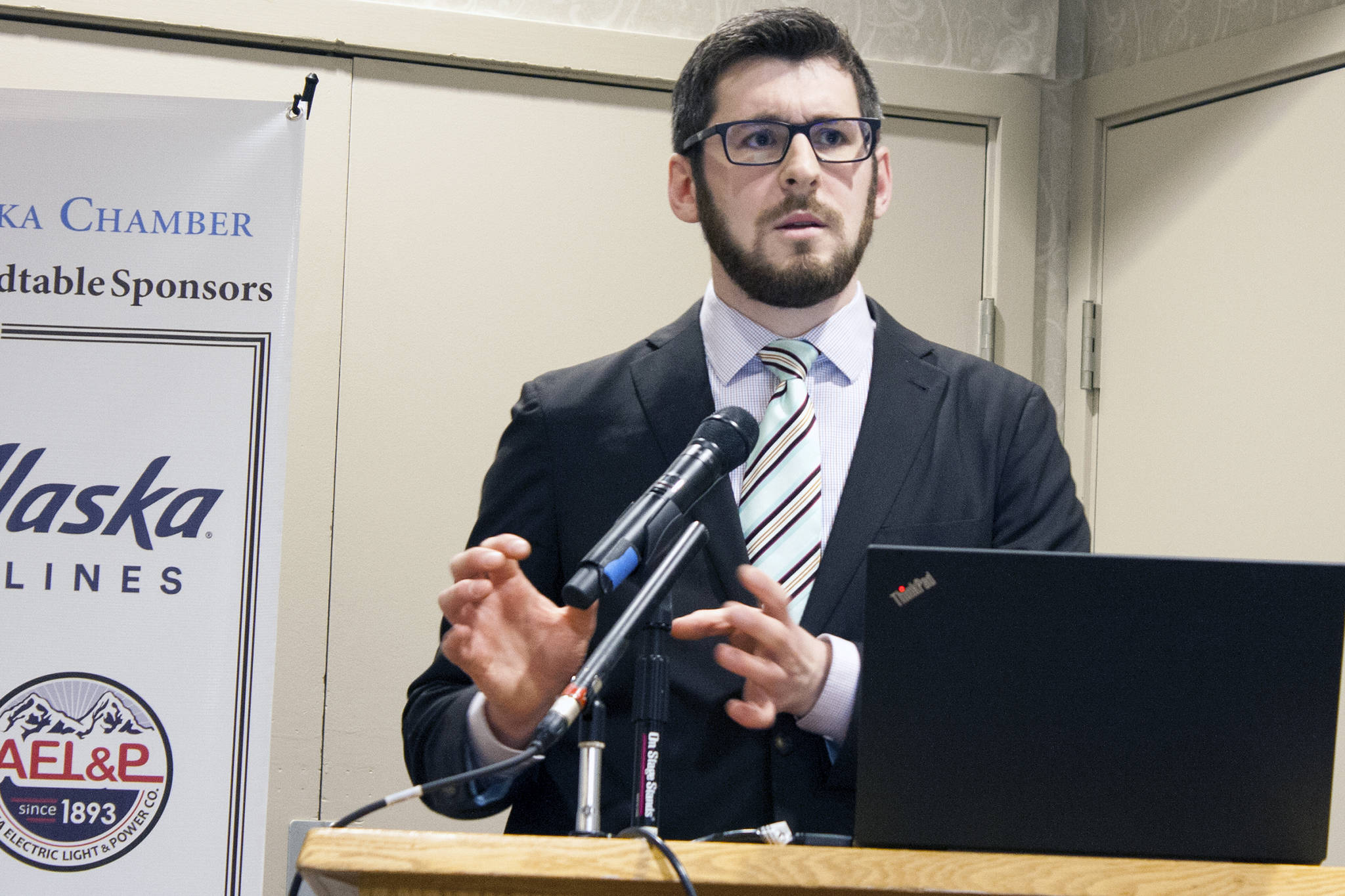People had questions, and Office of Management and Budget Director Neil Steininger supplied answers.
During the Greater Juneau Chamber of Commerce’s Thursday luncheon, Steininger spent about 25 minutes taking questions about Alaska’s budget and ways to plug a $1.5 billion deficit and to bring in revenue to a state with quickly dwindling savings.
“Now, we’re at an impasse,” Steininger said. “The savings we have left, we don’t really measure it in years like it was before. It’s now kind of measured in months.”
Most of the questions directed toward Steininger had to do with strategies to prevent that from happening.
Chamber Executive Director Craig Dahl asked Steininger if he could provide numbers for the state’s main sources of revenue.
“About 61 % of the revenue comes out of the POMV, the percent of market value, draw on the Permanent Fund, so that’s just over $3 billion in collected money,” Steininger said. “Twenty-eight percent comes out of petroleum revenue. It’s $1.4 billion. The rest is non-petroleum and non-Permanent Fund interest earnings.”
[New OMB director comes with in-state experience]
After the meeting, Steininger said in an interview no proposed new revenue stream stands out as a particularly good option for additional revenue. A state lottery, increased motor fuel taxes, income tax and increasing the tax collected from oil companies have all been suggested during this legislative session.
“I don’t know that there’s any one in particular I would point to,” he said.
Dahl also asked Steininger about the “gorilla in the room,” which Dahl said was finding a balance between paying out a Permanent Fund Dividend to Alaskans and funding state services.
“This year, in FY 2021, the statutory dividend is $2 billion, a little over $3,000 per Alaskan,” Steininger said. “Really, in terms of how that formula goes forward, obviously $2 billion out of roughly $5 billion total revenue is a significant portion of available revenue.”
He said the formula will need to be considered in concert with the other areas of state spending going forward.
Juneau Economic Development Council Executive Director Brian Holst asked what eliminating the PFD would do to the state budget. Steininger said it would produce a surplus.
“However, you could cut other statutory programs, if we cut all K-12 funding, we’d be in a much different position as well,” Steininger said.
That drew laughs, possibly because Holst is also president of Juneau’s school board, but it also got some pushback from an audience member who said he views sending his children to school as different from the extra money Alaskans receive from the PFD.
[State of the stats: Context for figures from the governor’s address]
Steininger said he may have been too glib in his comment.
“What I’m trying to illustrate is there’s a lot of these statutory programs that have built up, and there’s not a solution where we don’t have to look at all of them,” he said.
Steininger was also asked about how large the PFD would be if it was made using only that surplus.
“A remainder dividend would be in the $700 range,” Steininger said.
• Contact reporter Ben Hohenstatt at (907)523-2243 or bhohenstatt@juneauempire.com. Follow him on Twitter at @BenHohenstatt.

